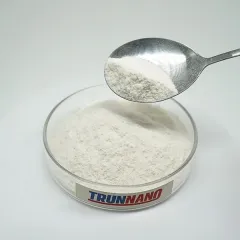- Home
- Products
- Elementary
- Boride Powder
- 3D Printing Powder
- Sulfide Powder
- Oxide Powder
- Carbide powder
- Nitride Powder
- Silicide Powder
- Hydride Powder
- Telluride Powder
- Selenide Powder
- Stearic Acid Series
- Phosphide Powder
- Nanoparticles
- Metal Alloy
- MAX Phase
- Lithium Battery Anode
- Surfactant
- Molecular sieves
- Concrete Admixtures
- Cladding of metals
- News
- Blog
- Contact
- About
HPMC Hydroxypropyl methylcellulose
Description of Hydroxypropyl methycellulose, or hydroxypropyl methycellulose:
Chemical properties: HPMC is a non-ionic cellulose derivative; its main chemical properties include water solubility, heat stability, acid resistance, etc. HPMC is easily soluble in water, forming a transparent solution with excellent solubility. Under acidic conditions, HPMC can also maintain stability and is not accessible to hydrolysis.
Physical properties: HPMC has excellent physical properties, such as high transparency, good film formation, high viscosity and so on. Due to its high transparency, HPMC can be used to prepare products with high transparency and good gloss. In addition, HPMC also has good film-forming properties and can be used to prepare films and coatings. At the same time, HPMC has a high viscosity and can be used as a thickener and stabilizer.
Biocompatibility: HPMC has good biocompatibility, can be absorbed and utilized by the human body, and has low toxicity and good biodegradability. These properties make HPMC widely used in medicine, food and other fields.
Stability: HPMC has excellent stability and can be stored for a long time without deterioration. During storage, HPMC must be protected from moisture and high temperatures to prevent moisture absorption and decomposition.
Environmental protection: HPMC is environmentally friendly and can be degraded in the natural environment. This property makes HPMC an ideal environmentally friendly material that can replace traditional non-environmentally friendly materials.

Production Method of Hydroxypropyl methycellulose, or hydroxypropyl methycellulose:
Raw material preparation: HPMC production requires using cellulose as a raw material, usually using natural cellulose or cellulose derivatives. In addition, it is also necessary to prepare an appropriate amount of sodium hydroxide, propylene oxide and other chemical reagents.
Alkalization treatment: The cellulose and sodium hydroxide solution is mixed and stirred at a specific temperature for a particular time to alkalize the cellulose fully. Alkalization can change the molecular structure of cellulose, making it easier to modify.
Etherification reaction: The alkalized cellulose and propylene oxide are etherified under a specific temperature and pressure, so the cellulose hydroxyl group reacts with propylene oxide to form the hydroxypropyl group. This reaction requires control of reaction conditions, such as temperature, pressure, reaction time, etc., to ensure the reaction is entirely carried out.
Washing and dehydration: After the reaction, the product is washed with water to remove unreacted chemical agents and impurities. After washing, the product must be dehydrated to remove the water and get a dry HPMC product.
Crushing and packaging: The dried HPMC is crushed for the required fineness. Finally, the product HPMC is packaged.
In the production process, the following points also need to be noted:
Safety: The HPMC production process needs to pay attention to safety issues, such as wearing protective equipment, avoiding chemical leakage, etc.
Equipment maintenance: It is necessary to check and maintain the equipment regularly during the production process to ensure its regular operation and the smooth progress of the production process.
Applications of Hydroxypropyl methycellulose, or hydroxypropyl methycellulose:
Building materials: HPMC has many applications in building materials, mainly used as additives and reinforcers. It can improve concrete's strength, durability and impermeability, and can also be used as an additive for materials such as mortar, gypsum and tile adhesives. These properties make HPMC one of the most critical additives in the construction industry.
Food industry: HPMC also has a wide range of applications in the food industry, mainly used as thickeners, stabilizers and emulsifiers. It can improve the taste, stability and shelf life of food. For example, in producing ice cream, milkshakes, drinks and other foods, HPMC can act as a stabilizer to prevent food separation and precipitation. In addition, HPMC can also be used to make food packaging film to improve the shelf life of food.
Pharmaceutical industry: HPMC also has a wide range of applications in the pharmaceutical industry, mainly as a drug carrier and ointment substrate. Because HPMC is biocompatible and can be absorbed and utilized by the human body, HPMC can also be used as an ointment substrate for the preparation of various ointments.
Cosmetics industry: HPMC also has a wide range of applications in the cosmetics industry, mainly used as thickeners, stabilizers and moisturizers. In the production of creams, masks, shampoos and other cosmetics, HPMC can improve product stability, moisture and consistency.
Petroleum and chemical industry: For example, in the production of coatings, paints, adhesives and other chemical products, HPMC can improve the stability, adhesion and durability of products.
Self-leveling floor material
1. HPMC Hydroxypropyl methylcellulose provides viscosity and can be used as an anti-precipitation aid.
2. HPMC Hydroxypropyl methylcellulose enhances fluidity and pum pability, thereby improving the efficiency of paving.
3. HPMC Hydroxypropyl methylcellulose controls water retention, thereby greatly reducing cracking and shrinkage.
Packaging and storage of HPMC Hydroxypropyl methylcellulose:
This product is packaged in a film-coated plastic woven bag with a net weight of 25kg per piece.
Avoid rain during storage and transportation.
Fire and moisture-proof.
Inquiry us
PREVIOUS Concrete Admixtures
High Slump Retaining Type Polycarboxylate Superplasticizer
NEXT Concrete Admixtures